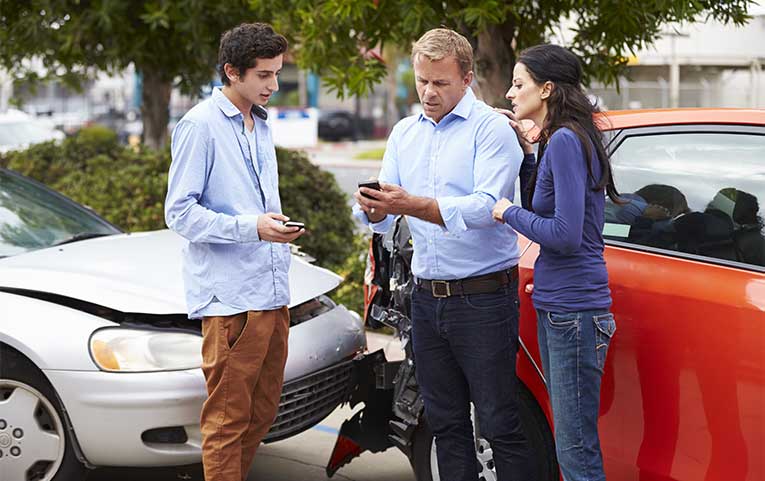Who is at Fault in a Merging Lane Accident?
February 27, 2024
For Australian drivers, an understanding of merging laws and how fault is determined is critical if you have been involved in this type of accident. This article helps inform Australian drivers about road rules, how to determine fault, different examples of merging lane accidents and what to do after being involved in one.
Understanding Merging Laws in Australia
In the Australian driving context, the rules governing lane merging are clear yet can be subject to various interpretations. The basic principle is that drivers attempting to merge into traffic are required to give way to vehicles already established in the lane.
However, this rule can vary slightly between states and territories, and its application often depends on specific road conditions and scenarios. For instance, in some cases, drivers on a terminating lane must yield to all traffic, while in others, a more cooperative approach is encouraged. This section aims to demystify common scenarios and misconceptions around merging laws, drawing on insights from traffic safety experts and official road rule publications. Understanding these variations is vital for drivers to navigate merging situations safely and legally.
Determining Fault in Merging Accidents
When a merging lane accident occurs, determining who is at fault can be a complex process, influenced by various factors and the specific circumstances of the incident. The process involves a detailed analysis of both drivers’ actions in relation to the established road rules and the conditions at the time of the accident. Important considerations include whether the merging driver gave way appropriately, the speed and positioning of the vehicles, and any sudden or unexpected maneuvers.
Evidence plays a key role in this determination, with dashcam footage, witness statements, and police reports often being crucial. Legal perspectives, including case law and expert opinions, can also provide valuable insights into how fault is typically assessed in these situations. Understanding these factors is key to comprehensively grasping how fault is established in merging lane accidents.

Example of Lane Merging Accidents and Fault Determination
Failing to Yield While Merging: A driver merges onto a busy highway from an entry ramp, colliding with a vehicle already on the highway. The merging driver believed they had sufficient space but did not adequately check for an opening.
Determining fault in this scenario could be complex. If evidence shows that the merging driver did not properly assess the traffic flow or speed, they might be found at fault. However, if the vehicle on the highway was speeding or changed lanes erratically, this could complicate the fault determination process.Misinterpretation of Merging Rules: At a point where two lanes merge, a driver assumes a ‘zipper’ merge is applicable and proceeds without yielding, leading to a collision.
The fault determination in this case could be challenging, particularly if the road signage was unclear or both drivers assumed they had the right of way. Understanding local merging rules is crucial, but in ambiguous situations, fault may not be straightforward and could require detailed investigation.Dispute Over Fault in a Merging Accident: Two vehicles collide while attempting to merge into the same lane. Each driver claims the other is at fault, and there are no clear road markings or dashcam footage.
This situation could lead to a highly complex fault determination. Without clear evidence or witnesses, it might be difficult to ascertain which driver had the right of way or whether both shared responsibility. Such cases often require mediation or legal intervention to resolve.Complexity of Merging in High-Speed Conditions: A driver tries to merge onto a fast-moving freeway and misjudges the speed of an approaching vehicle, resulting in a rear-end collision.
Determining fault here could be intricate. Factors like the merging driver’s judgment and the speed of the oncoming vehicle play a role. If the merging driver failed to account for the speed of oncoming traffic, they might be found at fault. However, if the oncoming vehicle was exceeding the speed limit or not paying attention, this could also affect the fault assessment.
Steps to Take After a Merging Lane Accident
The immediate actions taken after a merging lane accident are pivotal in ensuring safety and protecting your interests in any subsequent fault determination process. Firstly, ensure that all involved parties are safe and that the scene of the accident is secure.
Then, exchange details with the other driver, including names, contact information, and insurance details. It is crucial to document the scene thoroughly; take photographs of the vehicles’ positions, any damage, and surrounding road conditions. If there are witnesses, gather their contact information as well.
Contacting the police may be necessary, particularly if there are injuries or significant property damage. Reporting the accident to your insurance company as soon as possible is also essential. When providing details of the incident, be factual and avoid admitting fault or liability at this stage, as this can be determined later through a more formal process.

If You Are Not At Fault
If you believe you are the not at fault party in a merging lane accident then speak to Right2Drive. We may be able to provide you with a like-for-like accident replacement car with all of the costs recovered from the at fault party.
Conclusion
This guide underscores the importance of being well-informed about how fault is determined in a mer, and the essential steps to take after an accident, drivers can better protect themselves legally and ensure their safety. Vigilance, education, and a proactive approach to road safety are key to navigating Australian roads with confidence and peace of mind.